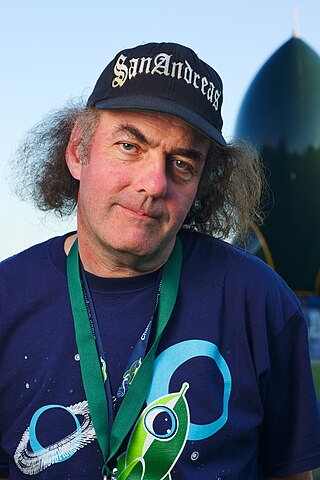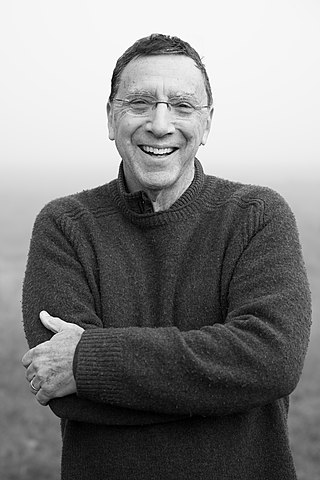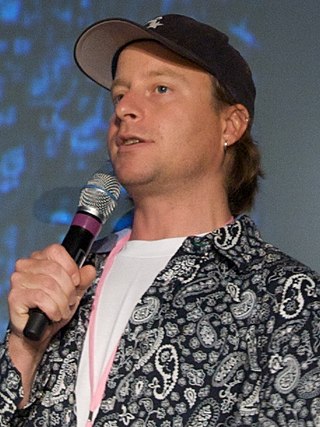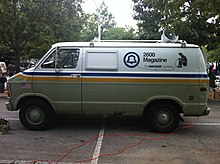
Eric Gordon Corley, also frequently referred to by his pen name of Emmanuel Goldstein, is a figure in the hacker community. He directs the non-profit organization 2600 Enterprises, Inc., publishes a magazine called 2600: The Hacker Quarterly, and hosts the hacker convention Hackers on Planet Earth (HOPE). His pseudonym is derived from the fictional opposition leader in George Orwell's dystopian novel Nineteen Eighty-Four.

Kevin David Mitnick was an American computer security consultant, author, and convicted hacker. He is best known for his high-profile 1995 arrest and five years in prison for various computer and communications-related crimes. Mitnick's pursuit, arrest, trial, and sentence along with the associated journalism, books, and films were all controversial. After his release from prison, he ran his own security firm, Mitnick Security Consulting, LLC, and was also involved with other computer security businesses.

A blue box is an electronic device that produces tones used to generate the in-band signaling tones formerly used within the North American long-distance telephone network to send line status and called number information over voice circuits. This allowed an illicit user, referred to as a "phreaker", to place long-distance calls, without using the network's user facilities, that would be billed to another number or dismissed entirely as an incomplete call. A number of similar "color boxes" were also created to control other aspects of the phone network.

John Gregory Markoff is a journalist best known for his work covering technology at The New York Times for 28 years until his retirement in 2016, and a book and series of articles about the 1990s pursuit and capture of hacker Kevin Mitnick.

The Hackers on Planet Earth (HOPE) conference series is a hacker convention sponsored by the security hacker magazine 2600: The Hacker Quarterly that until 2020 was typically held at Hotel Pennsylvania, in Manhattan, New York City.
Freedom Downtime is a 2001 documentary film sympathetic to the convicted computer hacker Kevin Mitnick, directed by Emmanuel Goldstein and produced by 2600 Films.

Mark Abene is an American information security expert and entrepreneur, originally from New York City. Better known by his pseudonym Phiber Optik, he was once a member of the hacker groups Legion of Doom and Masters of Deception.
A black hat is a computer hacker who violates laws or ethical standards for nefarious purposes, such as cybercrime, cyberwarfare, or malice. These acts can range from piracy to identify theft. A Black hat is often referred to as a "cracker".

Universal City Studios, Inc. v. Corley, 273 F.3d 429, was a court ruling at the United States Court of Appeals for the Second Circuit. The ruling was the first significant test of the anti-circumvention provisions of the Digital Millennium Copyright Act.
2600 hertz (2600 Hz) is a frequency in hertz that was used in telecommunication signaling in mid-20th century long-distance telephone networks using carrier systems.

Jeffrey Crawford "Lazlow" Jones is an American writer, producer, director, voice actor, and radio personality. He is best known for his work with Rockstar Games, with which he has worked on the Grand Theft Auto, Max Payne, and Red Dead Redemption series and for his radio shows Technofile and The Lazlow Show.

Off the Hook is a hacker-oriented weekly talk radio program, hosted by Emmanuel Goldstein, which focuses on the societal ramifications of information technology and the laws that regulate how people use them. It airs Wednesday nights at 7:00 p.m. Eastern Time in New York City on the community radio station WBAI 99.5 FM. It is also simulcast online via streaming MP3, rebroadcast on various other radio stations, and has been made available as a podcast.
A security hacker is someone who explores methods for breaching defenses and exploiting weaknesses in a computer system or network. Hackers may be motivated by a multitude of reasons, such as profit, protest, information gathering, challenge, recreation, or evaluation of a system weaknesses to assist in formulating defenses against potential hackers.
Emmanuel Goldstein is a key character in George Orwell's novel Nineteen Eighty-Four.
Bernie S. is a computer hacker living in Philadelphia, Pennsylvania. He was a regular panelist on the WBAI radio show Off the Hook. In 2001 he appeared in Freedom Downtime, a documentary produced by 2600 Films.
Charles Platt is a British author, journalist and computer programmer. He relocated from England to the United States during 1970 and is a naturalized U.S. citizen. He has one child, Rose Fox, who edits science-fiction, fantasy, and horror book reviews. Platt is the nephew of Robert Platt, Baron Platt of Grindleford.
Plover-NET, often misspelled Plovernet, was a popular bulletin board system in the early 1980s. Hosted in New York state and originally owned and operated by a teenage hacker who called himself Quasi-Moto, whom was a member of the short lived yet famed Fargo 4A phreak group. The popular bulletin board system attracted a large group of hackers, telephone phreaks, engineers, computer programmers, and other technophiles, at one point reaching over 600 users until LDX, a long distance phone company, began blocking all calls to its number (516-935-2481).










